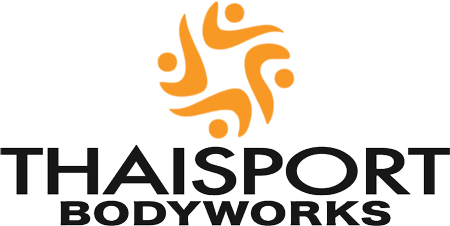The Benefits of Thai Neuromuscular Therapy
Thai Neuromuscular Therapy is a unique combination of Eastern and Western modalities. In our opinion, it is one of the most effective hands-on therapies for the treatment of injuries, sports recovery, and many other muscles and tissue-related concerns.
Thai Massage offers a wide range of musculoskeletal techniques: deep tissue compression, stretching, and joint mobilization. Neuromuscular Therapy uses muscle-fiber friction techniques and trigger point deactivation to address chronic tension and pain and breaks the infamous Pain-Spasm Cycle.
Breaking the Pain-Spasm Cycle
Our modern daily habits of sitting too long, driving, and the lack of variety of movement patterns cause a slew of postural and bio-mechanical dysfunctions. Just to name a few, you may recognize these patterns in yourself or in other people:
Chronically short hip flexors
Chronically weak and overstretched Gluteals (butt muscles)
Weak core (obliques and abdominals)
Weak and overstretched lumbar spine muscles
Chronically short Pectoralis major and minor
Chronically overstretched Trapezius and Levator muscles
Chronically weak Anterior neck muscles.
Weak muscles go into a spasm because they cannot handle the effort of good posture or basic physical exercise. Therefore, most of our issues stem from muscles that are both WEAK AND TIGHT.
Shortened and tight muscles entrap or impinge nerve tissues, which causes pain. The pain brings further muscle tension. In neuromuscular therapy, this cycle is referred to as the Pain-Spasm Cycle. Neuromuscular therapy aims to interrupt the Pain-Spasm Cycle and restore normal function to the affected tissues.
When is This Therapy necessary?
Here are some of the most common symptoms that our clients come in to seek relief from:
· Pain (in muscles, connective tissue, or organs, including headaches and abdominal pain)
· Limited Range of Motion and Stiffness
· Restricted Blood Flow (Ischemia)
· Poor Posture/Mis-alignment
· Pinched Nerves
· Weakness/Loss of strength and function
· Numbness and Tingling sensations
· Digestive problems
What are Trigger Points?
Trigger points are neuro-muscular epicenters of pain within a muscle fiber. TPs develop in areas of ischemic tissue (tissue lacking blood flow). When a muscle is loaded past its strength or ability, it may develop trigger points.
This over-loading of a muscle can happen all at once, as in the case of lifting a heavy bag, which overloads your Levator Scapula or one of the Rotator Cuff muscles. Or it may occur over time, stressing (and overstretching) the Levator Scapula with prolonged sitting at a desk; because much of our arm-and-shoulder girdle ‘hangs’ on the Levator Scapula. At some point, the muscle is not able to handle the stress and goes into a chronic contraction state (spasm) to protect itself from tearing. Any point along the length of the muscle may become a focus of this hyper-irritability and give rise to pain.
TRY IT TODAY!
We have Thai Neuromuscular experts in both Rancho Bernardo and Sorrento Valley locations.
SLAVA KOLPAKOV
Thai Sport Bodyworks
Rancho Bernardo

